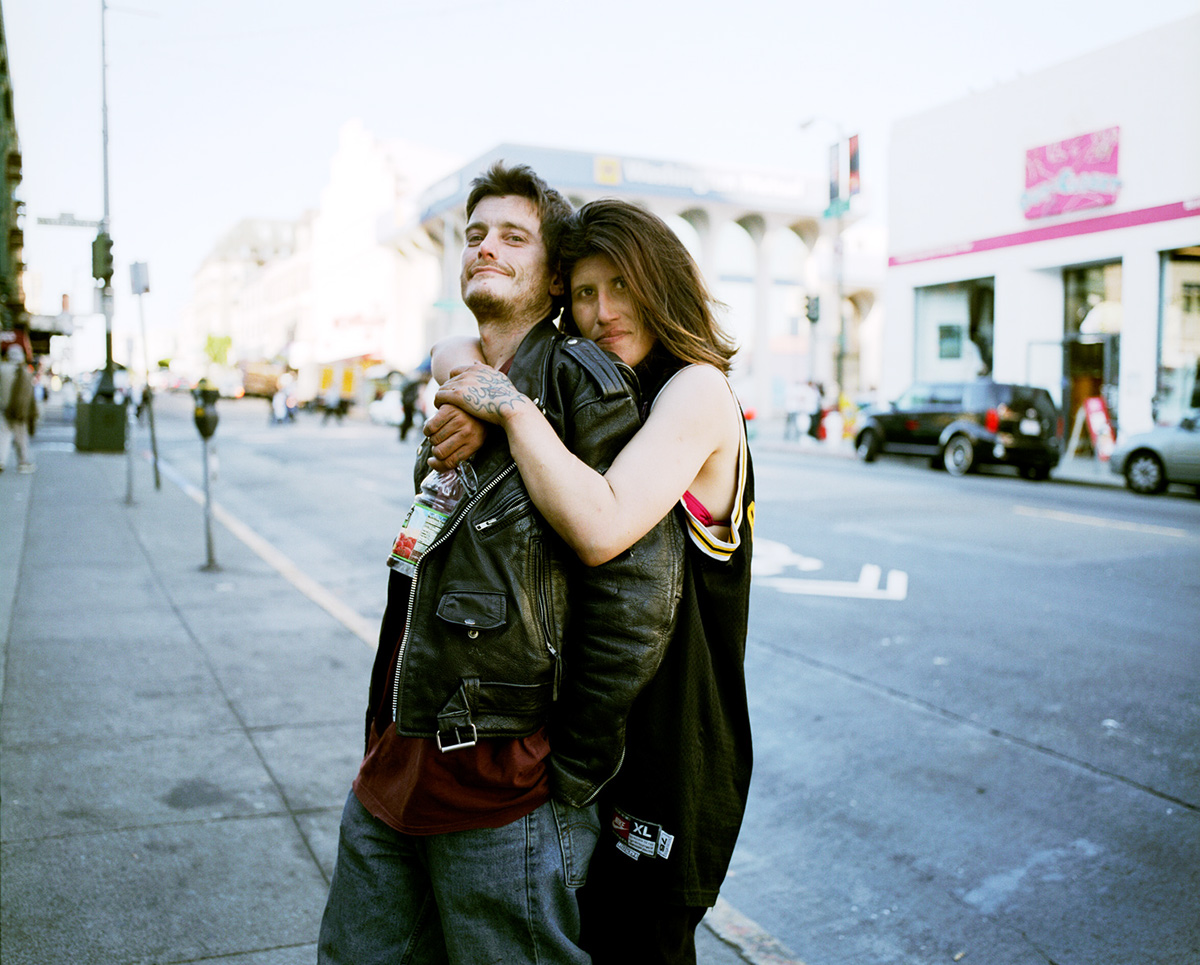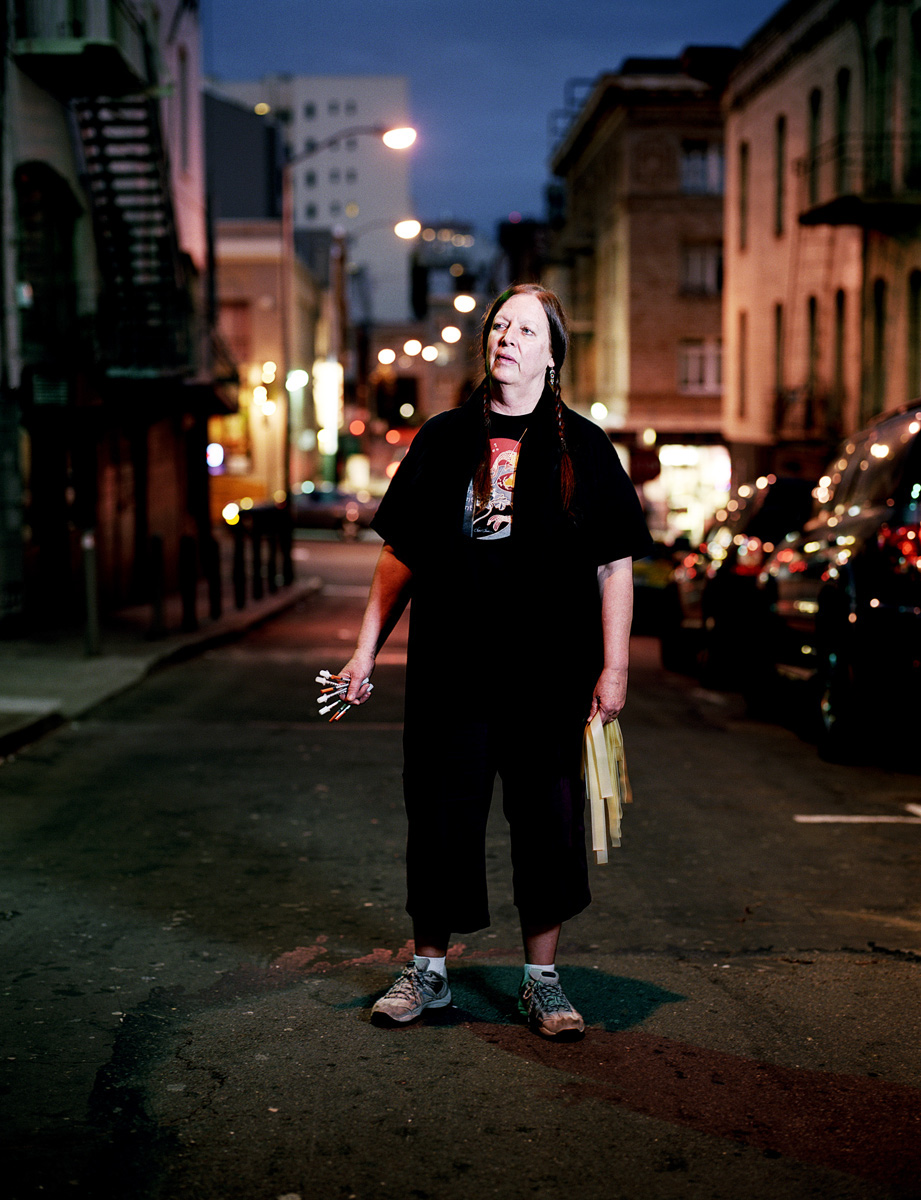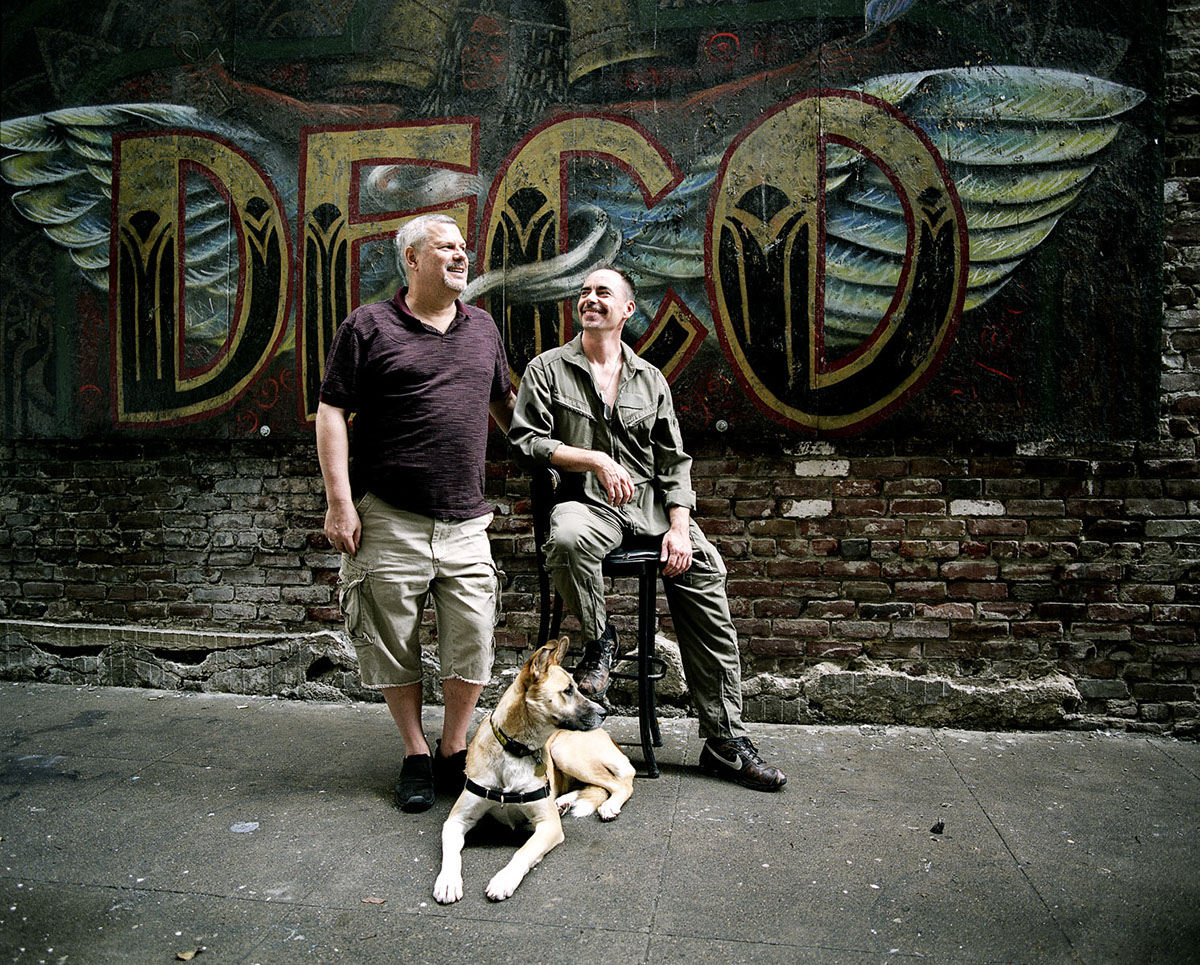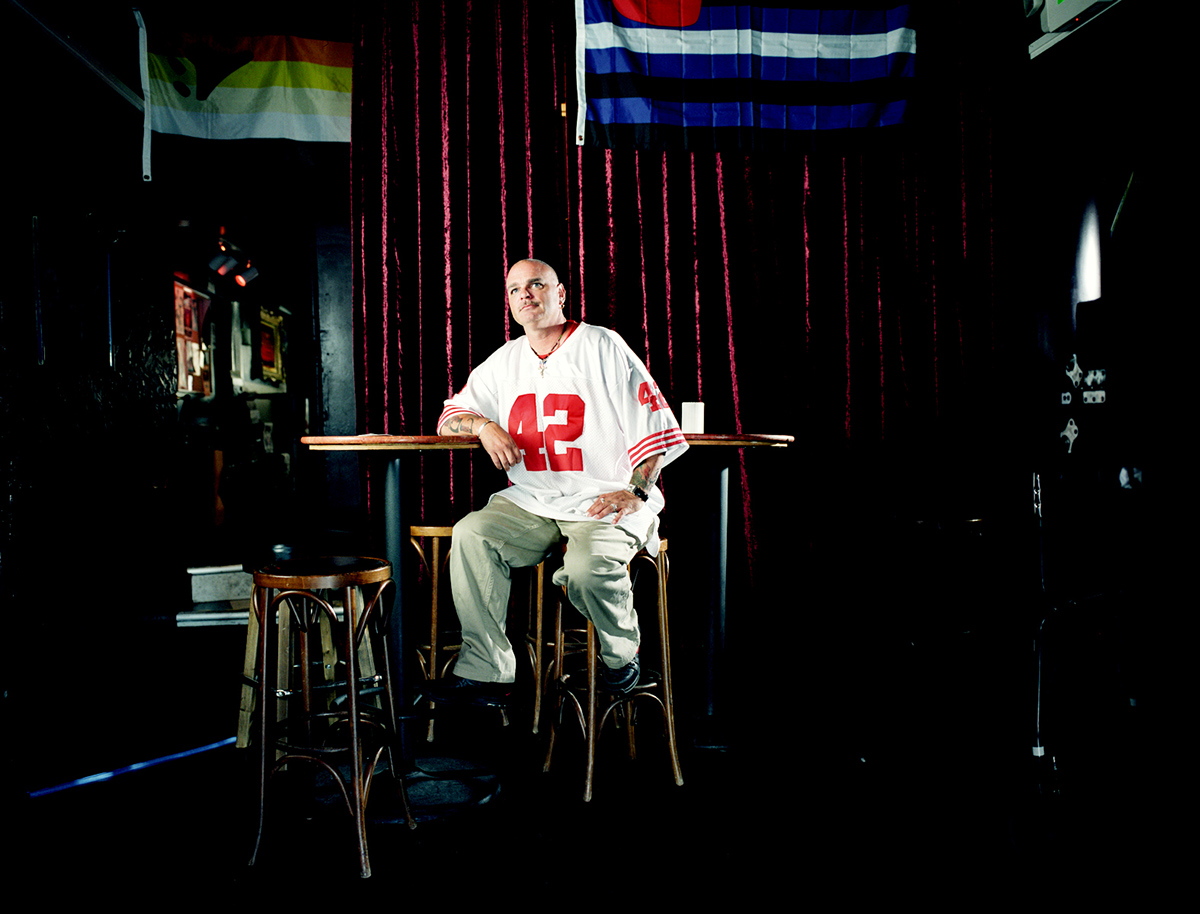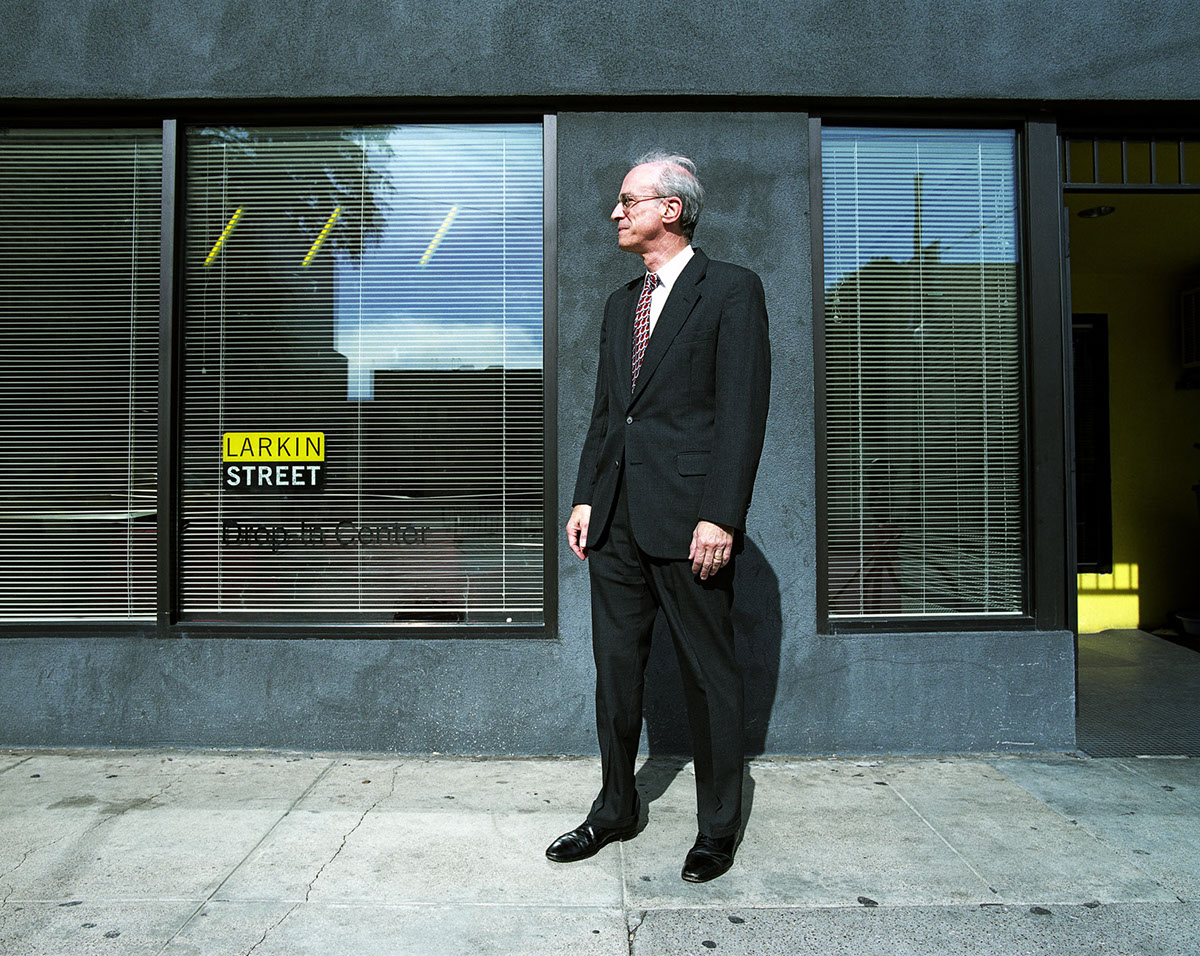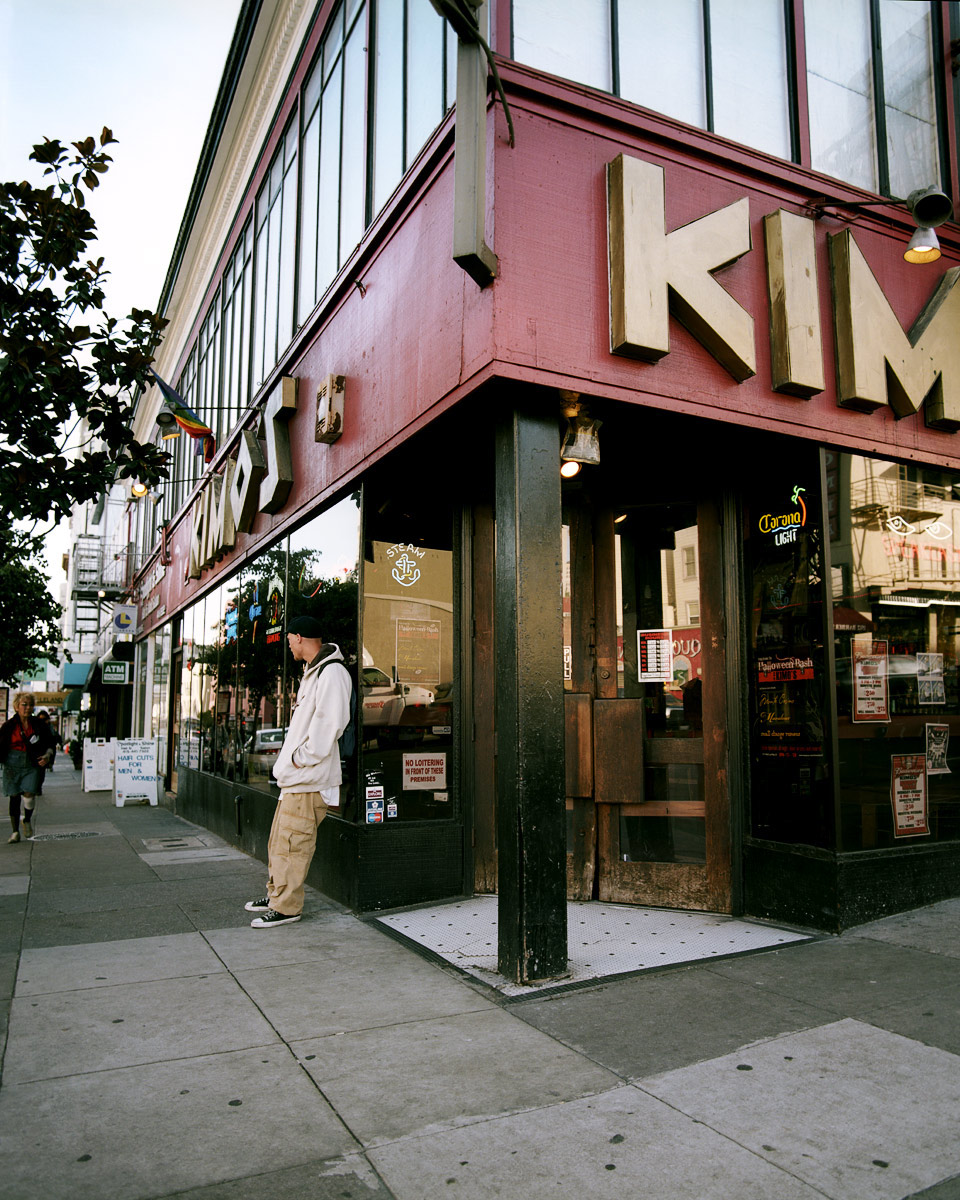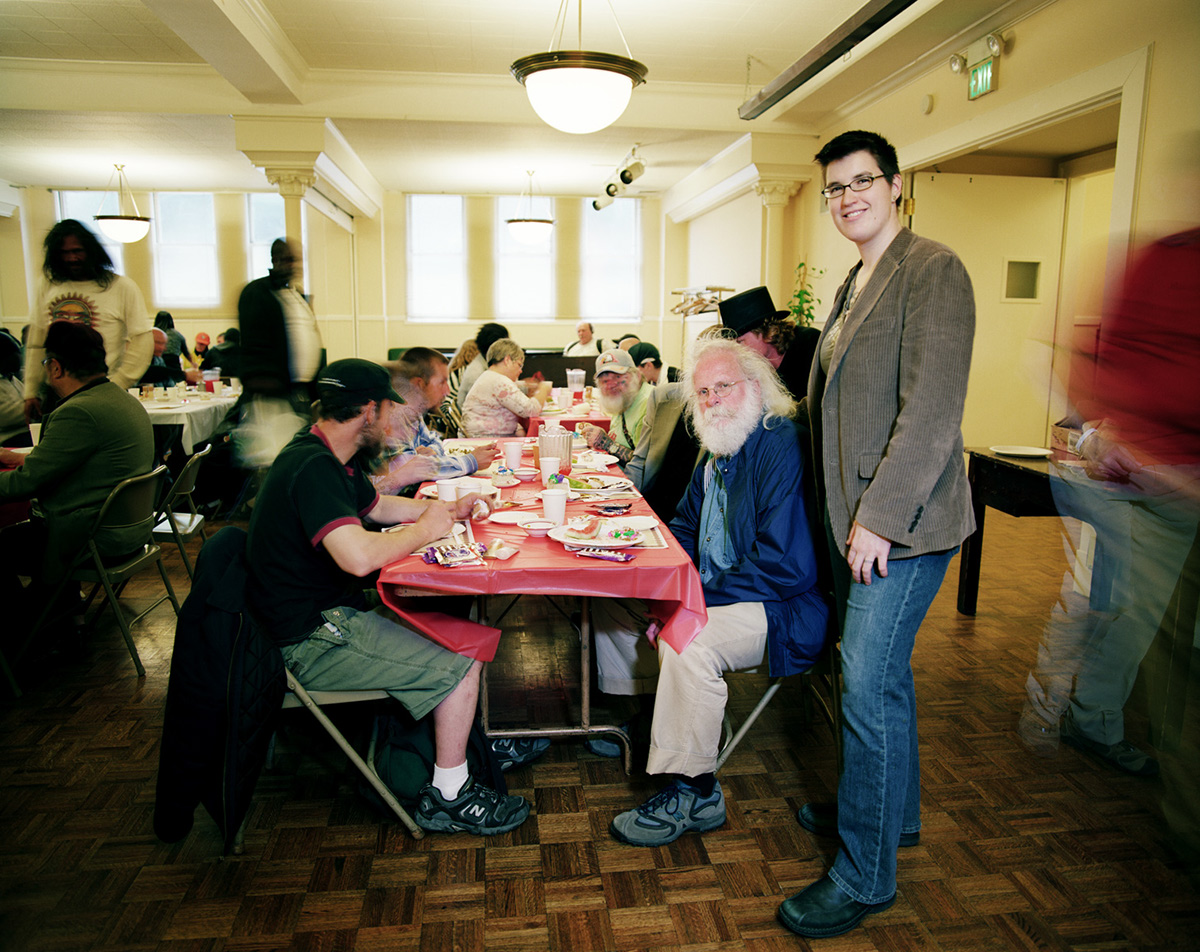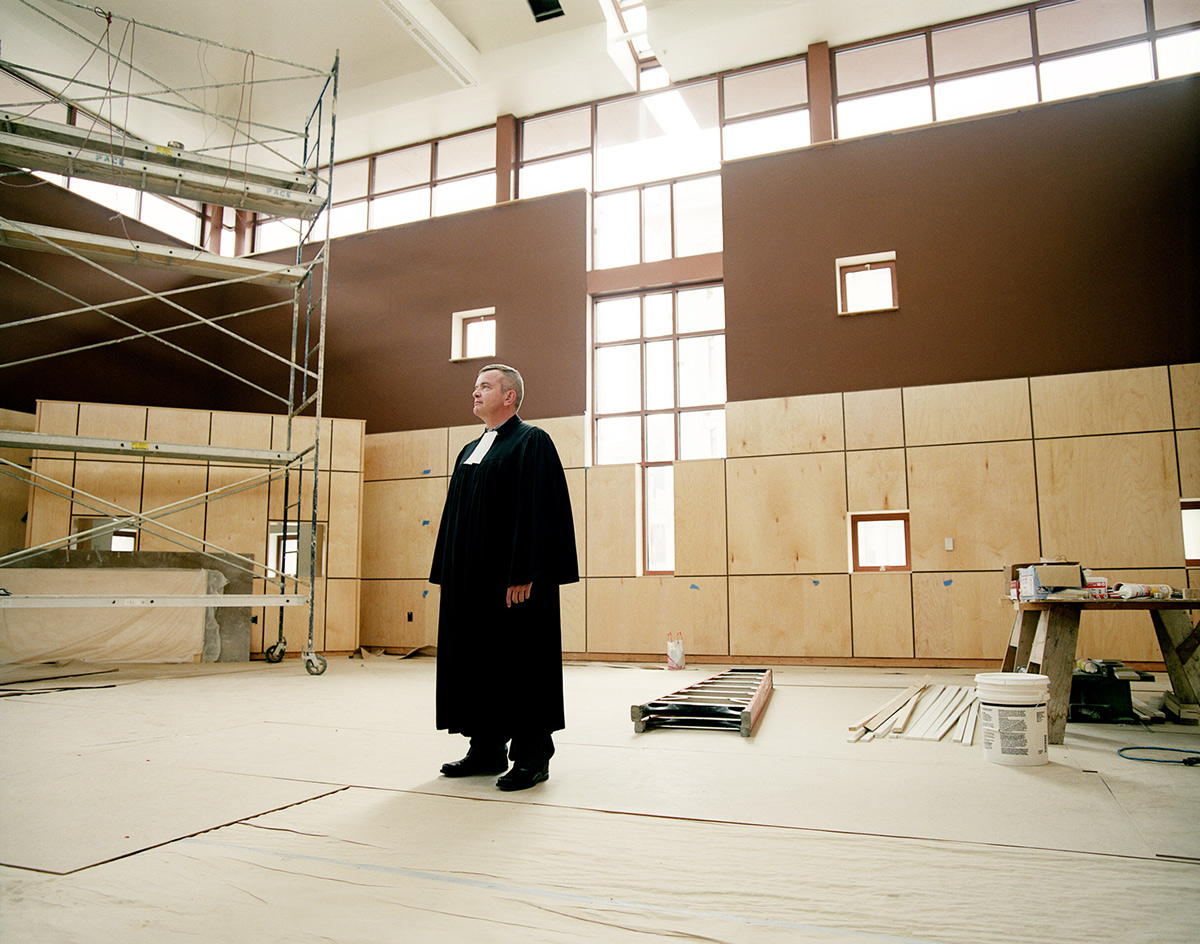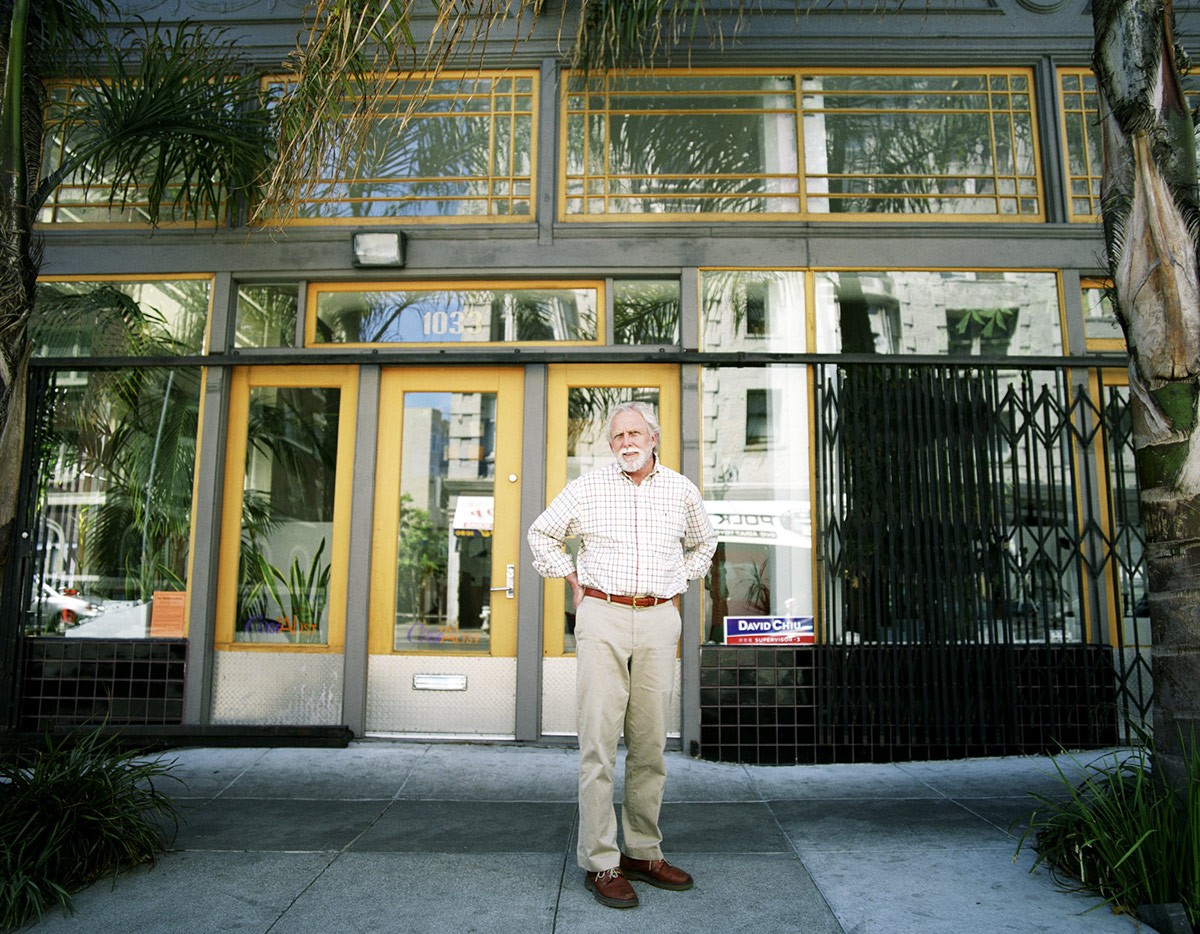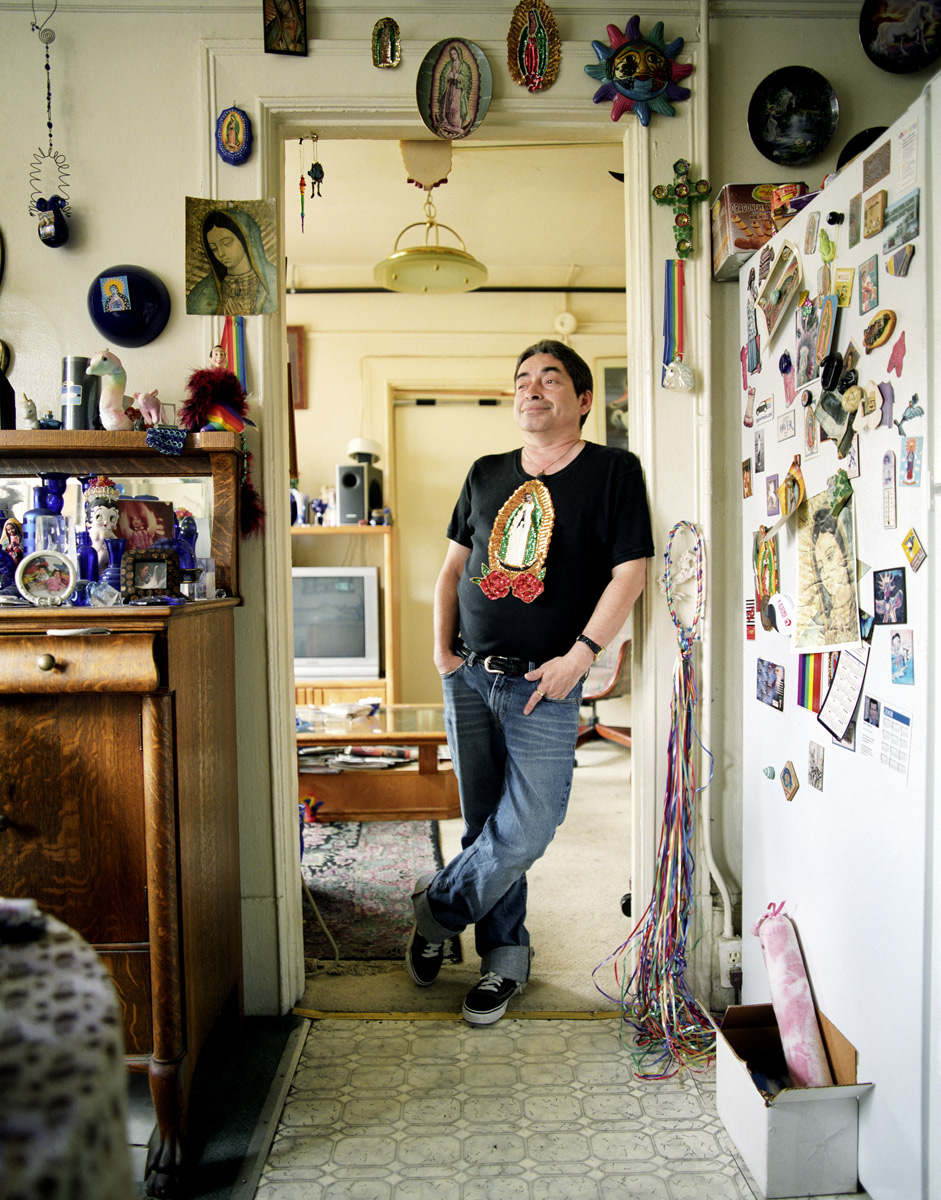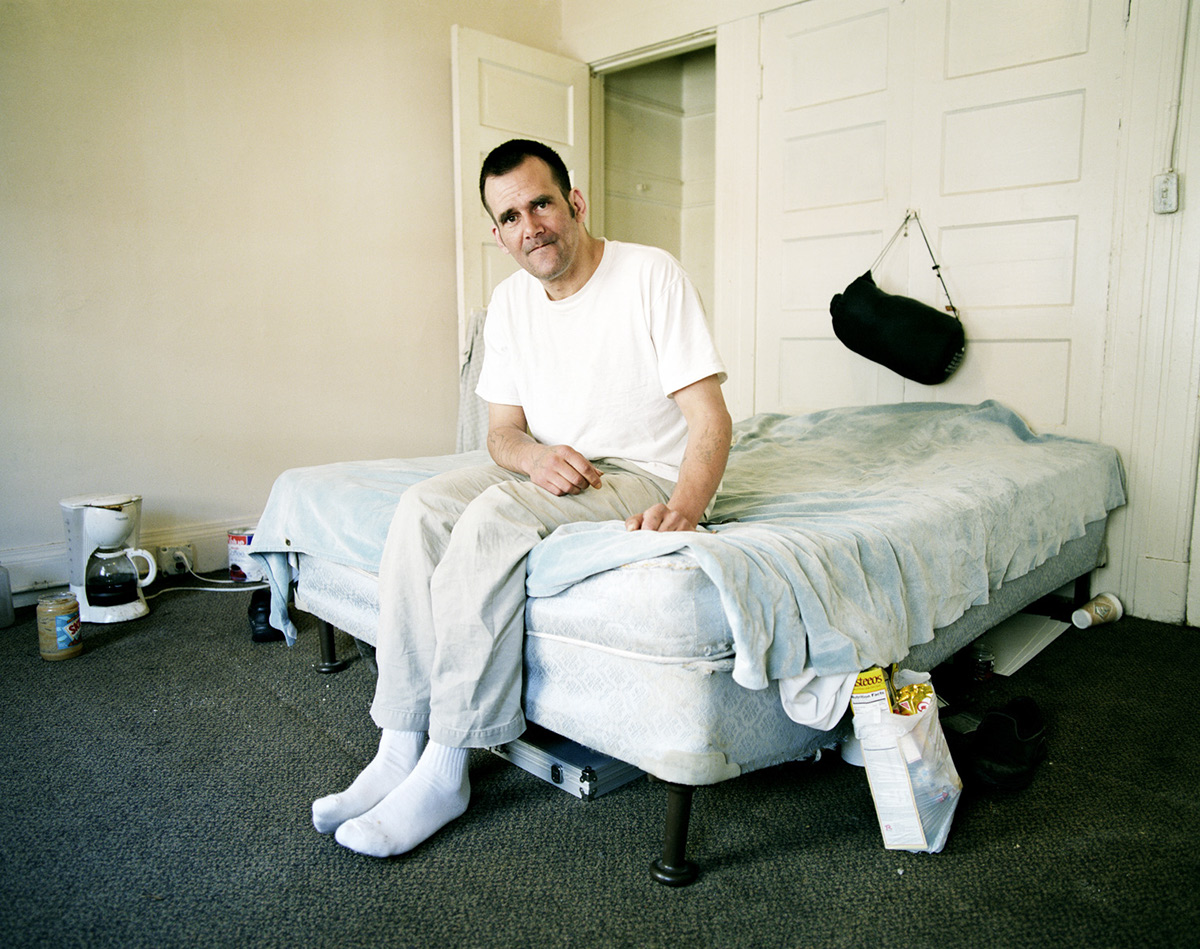
POLK STREET: Lives in Transition
Polk Street (a.k.a. Polk Strasse, Polk Gulch, Lower Polk, Polk Village) was San Francisco’s premiere gay male center in the 1960s and 1970s. The residential enclave and business district provided fertile ground for the development of gay economic and political power through organizations such as the Tavern Guild, the Imperial Court, and the Council for Religion and the Homosexual.
Its bloc of middle-income gay businesses evaporated in the late 1970s, leaving a “blighted” area known for its underground sex work and drug economy. During these decades, Polk Street served as a home, refuge, and family for queer runaway and homeless youth, often fleeing abusive or unwelcome homes; immigrants, primarily from Asia and Latin America; and, increasingly in the 1990s, lower-income transgendered women and seniors.
The neighborhood now is again changing dramatically. Since the early 2000s, a citywide building boom, skyrocketing rents in the central city, and increases in permanent housing for the formerly homeless have pushed and pulled new actors to the area. At the same time, the scores of queer bars that formed the backbone of the Polk community have almost all been replaced by upscale, heterosexual and mixed drinking establishments, while the street’s sex work economy has largely disappeared.
Tension, bitterness, and misunderstandings now accompany the changes, with the vestiges of a once thriving queer community competing with new businesses and residents for prized territory in the urban landscape. This exhibit pays special attention to conflicts between two economies: one faltering, based around queer bars, sex work, and social service organizations; and one emerging, championed by a bloc of businesses, neighborhood associations, and residents now working to police, beautify, and attract new clients to the area.
Polk Street, defined here as Van Ness to Larkin and Ellis to California, is a crossroads situated between several very different neighborhoods: the low-income Tenderloin area; the Van Ness commercial thoroughfare; the affluent, residential Nob Hill; and the seat of government at Civic Center. As such, the relatively small swath of land has often been a flashpoint, providing a magnified view of issues such as housing, homelessness, real estate, and sexual politics that divide the city as a whole. With this exhibit, we invite everyone to explore life at the flashpoint through the stories of those who live, work, and play there.
Its bloc of middle-income gay businesses evaporated in the late 1970s, leaving a “blighted” area known for its underground sex work and drug economy. During these decades, Polk Street served as a home, refuge, and family for queer runaway and homeless youth, often fleeing abusive or unwelcome homes; immigrants, primarily from Asia and Latin America; and, increasingly in the 1990s, lower-income transgendered women and seniors.
The neighborhood now is again changing dramatically. Since the early 2000s, a citywide building boom, skyrocketing rents in the central city, and increases in permanent housing for the formerly homeless have pushed and pulled new actors to the area. At the same time, the scores of queer bars that formed the backbone of the Polk community have almost all been replaced by upscale, heterosexual and mixed drinking establishments, while the street’s sex work economy has largely disappeared.
Tension, bitterness, and misunderstandings now accompany the changes, with the vestiges of a once thriving queer community competing with new businesses and residents for prized territory in the urban landscape. This exhibit pays special attention to conflicts between two economies: one faltering, based around queer bars, sex work, and social service organizations; and one emerging, championed by a bloc of businesses, neighborhood associations, and residents now working to police, beautify, and attract new clients to the area.
Polk Street, defined here as Van Ness to Larkin and Ellis to California, is a crossroads situated between several very different neighborhoods: the low-income Tenderloin area; the Van Ness commercial thoroughfare; the affluent, residential Nob Hill; and the seat of government at Civic Center. As such, the relatively small swath of land has often been a flashpoint, providing a magnified view of issues such as housing, homelessness, real estate, and sexual politics that divide the city as a whole. With this exhibit, we invite everyone to explore life at the flashpoint through the stories of those who live, work, and play there.
